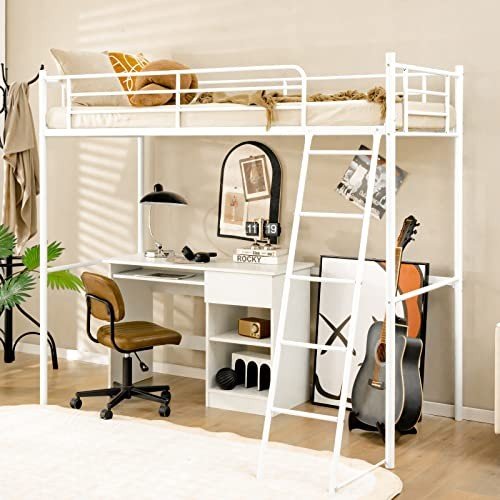A Comprehensive Guide to Children's Bunk Beds: Styles, Benefits, and Safety Considerations
Bunk beds have actually ended up being a popular option for households looking to maximize space and offer a fun sleeping environment for kids. With their special design, they offer an imaginative and useful service for shared bedrooms, playrooms, or perhaps guest lodging. This short article explores the numerous styles of children's bunk beds, their advantages, safety factors to consider, and responds to some regularly asked concerns.
The Allure of Bunk Beds
Children's bunk beds are more than simply space-saving structures; they are likewise a gateway to adventurous dreams and creative play. Below is Bunk Beds Children's hattiedeleon.top detailed assessment of their many benefits.
Advantages of Bunk Beds
- Space-Saving: Bunk beds efficiently use vertical space, making them a perfect option for smaller sized rooms.
- Spirited Design: Many bunk bed styles include slides, camping tents, and themed elements, sparking imagination and enjoyment.
- Partner Sharing: Bunk beds are ideal for brother or sisters sharing a space or accommodating sleepovers.
- Flexible Use: Some models can be separated into two specific beds, providing versatility as kids grow.
- Storage Options: Many bunk beds include built-in drawer storage or racks, further enhancing their functionality.
Designs of Children's Bunk Beds
The range of bunk beds offered today deals with various choices and requirements. Below is an overview of some popular styles.
| Design | Description | Best For |
|---|---|---|
| Requirement Bunk Bed | A traditional style featuring one bed stacked above another. | Siblings sharing a space. |
| Loft Bed | Comparable to a bunk bed without the bottom bunk, enables an office or play area below. | Minimal space for play/desk. |
| L-Shaped Bunk Bed | 2 beds arranged in an L-shape, often with extra sections for storage or play. | Distinct space layouts. |
| Twin Over Full | A twin bed over a complete bed, accommodating different sleep needs. | Growing children and teens. |
| High Sleeper | Stands even greater than a loft bed, typically including a desk or play location below. | Older kids needing more play/desk space. |
| Tent Bunk Bed | Bunk beds with a canopy or tent-like structure, developing a comfortable, enjoyable space. | Active and creative children. |
Key Features to Consider
When choosing the right bunk bed for kids, the following features are worth thinking about:
- Material: Bunk beds can be made from wood, metal, or a combination. Each has its unique aesthetic and sturdiness.
- Weight Capacity: Always confirm the weight limitation of the bunk bed to ensure it can accommodate your kids securely.
- Safety Rails: Ensure the top bunk has tough rails to avoid falls.
- Ladder Security: A well-designed ladder must offer simple and safe access to the upper bunk.
- Ending up: Ensure any surfaces are non-toxic and safe for kids.
Security Considerations
Safety is paramount when it comes to kids's bunk beds. The following standards ought to be stuck to:
- Age Appropriateness: Generally, children under six years old need to not oversleep the upper bunk due to safety risks.
- Durable Construction: Ensure the frame and products are solid and can support the weight without drooping.
- Regular Maintenance: Periodically look for loose screws, bolts, or other parts that may need tightening.
- Clear Play Area: Keep the location around the bunk bed complimentary of toys and barriers to reduce tripping hazards.
Setting Rules for Safe Use
Establishing standards for bunk bed use will help guarantee safety:
- Limit Jumping and Climbing: Children ought to be recommended versus leaping from the leading bunk and getting on the sides.
- Monitoring Sleepovers: Monitor young visitors while they are utilizing the bunk bed for the very first time.
- Educate on Ladder Use: Teach how to use the ladder safely, highlighting the value of dealing with the ladder when climbing up or down.
Regularly Asked Questions
1. What age is appropriate for a kid to oversleep the leading bunk?
Many makers suggest that children ought to be at least 6 years old to oversleep the upper bunk. This guideline is created to alleviate the risk of falls.
2. Can bunk beds be personalized?
Yes, numerous producers offer personalized options, consisting of colors, products, and additional features like drawers or desks.
3. Are bunk beds safe for weight?
Bunk beds have weight limitations, generally varying from 200 to 400 pounds, depending upon the design and product. Constantly check the maker's specifications.
4. How do I maintain and clean up a bunk bed?
Frequently look for loose parts, keep the bed clean by cleaning down surface areas, and make sure the bed linen is fresh to promote a safe and hygienic sleep environment.
5. Can bunk beds be separated into individual beds?
Many bunk beds include a choice to separate them into 2 specific beds, supplying long-term versatility.
Kid's bunk beds are more than mere furnishings; they are a functional, flexible, and imaginative component of a child's room. With different designs available and many safety factors to consider to bear in mind, parents can pick the ideal bed that fits their space, satisfies their kids's requirements, and imparts a sense of experience. By comprehending the benefits, styles, and precaution related to bunk beds, households can develop a delightful and safe sleeping environment for their children. Whether for siblings sharing a space or space-saving options, bunk beds remain a beloved option for lots of homes.

